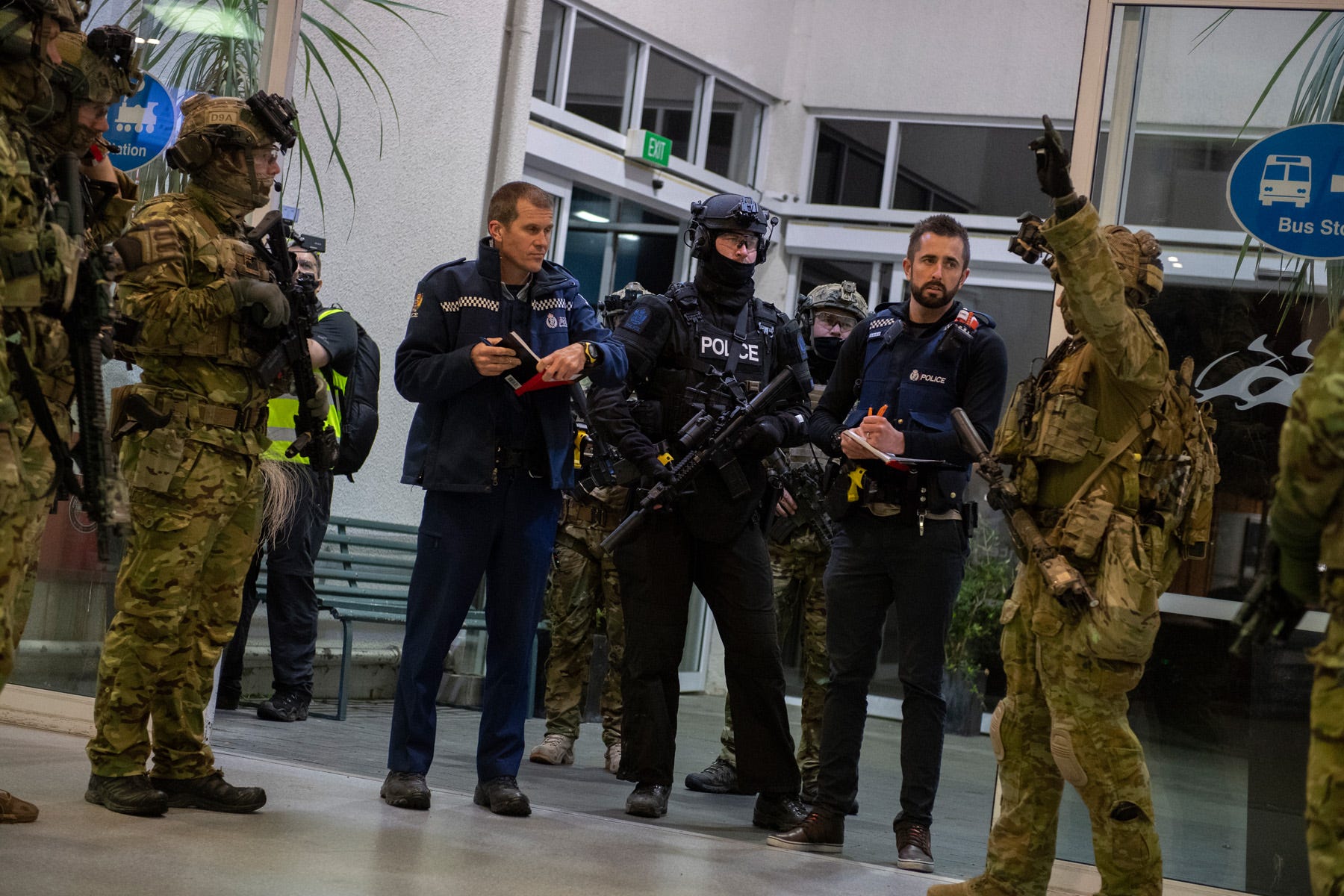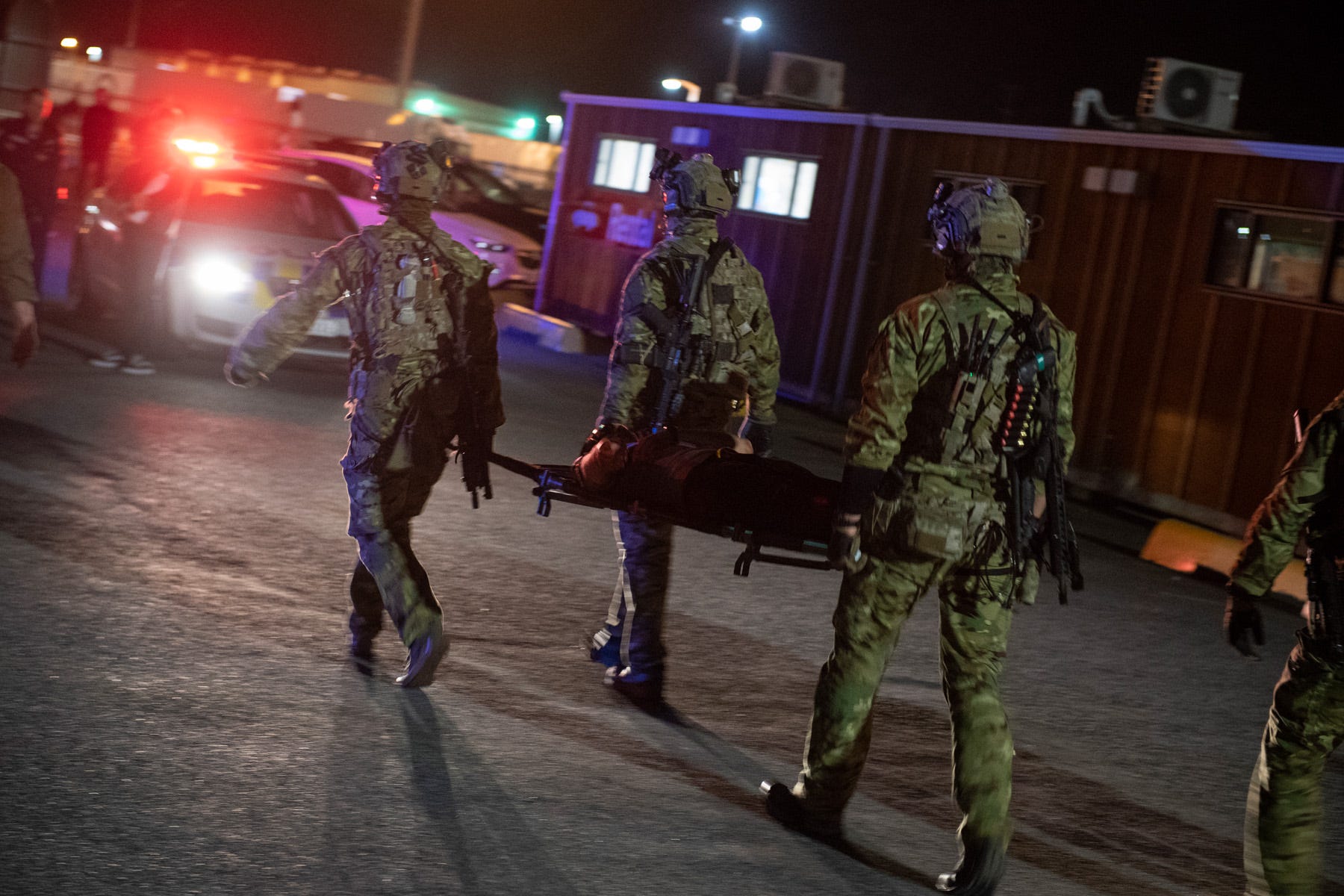Huddled in a small, cold, concrete room, open to the elements on the top floor of an abandoned building in the dead of night, held captive with four others by a terror group, we waited for help. New Zealand’s Special Operations Forces’ Counter Terrorist Team (CTT) was on their way, so our captors laid trip wires and watched the stairwells, armed with guns. When help arrived, it was swift and precise.
The Special Operations Forces conducted a two-week exercise recently, to certify Counter Terrorist Team capabilities. Special Operations Counter Terrorist capabilities are designed to provide specialist support to the Police and the Civil Authority when requested, and at direction of the government. This includes small teams capable of working alongside Police and also larger elements when the safety of New Zealanders is threatened. It was a rare opportunity to see how the highly-skilled team honed these skills.
One part of the exercise involved extracting hostages held by an armed terrorist group. Playing the role of one of the five hostages, we waited in a small, cold, listening for signs the Special Operations Forces had arrived. The first came when one of the barricaded doors on the ground level of the building was forced open.
The second sign was when an explosion of simulation ammunition fired in the space outside our room, stopping the terrorist from harming their would-be victims. The team had taken the terror group members by surprise, arriving on the third floor quickly and silently.
- Aucklanders near Papakura SAS base complain of helicopters and engine noise
- Is NZ selling civilians short in our military conflicts?
- Crucial evidence suddenly upsets Operation Burnham inquiry
Entering the room with their faces completely covered, wearing helmets, night vision equipment and carrying rifles, CTT members ordered us to face the wall with our hands up. We were under no impression that the request was negotiable.
Two of my fellow hostages were “injured” by the terrorists in the melee, and were attended to quickly by the CTT medics and quickly evacuated to higher medical aid. The rest of us were lined up with our hands on the person’s shoulders in front of us and led out of the stronghold. We were placed in the new NZDF protected mobility vehicle, the Bushmaster, and driven to the safety of the waiting NZ Police at the cordon of the site.
The initial action was over in about four minutes, incredibly quick due to the complex nature of the hostage rescue operation. The team cleared other surrounding buildings and rounded up the last of the terror group.
The Special Operations Forces is made up of a combination of personnel from the three services. They come from all different trades and bring a vast number of skills with them.
Major (MAJ) J* said the exercise was to practice the CTT tactical level of competency, within a broader police response, so if they were to be called out at short notice, the CTT would be able to respond quickly and effectively.
“The plan for this exercise is to incorporate all of our squadron-level assets as well as involving other portions of the Defence Force, including №3 Squadron Helicopters and №40 Squadron C-130 Hercules to provide us with aircraft to move us around the country as soon as requested by Police.”
The Counter Terrorist Team is always on call to assist New Zealand Police and the Civil Authority in response to terrorist and asymmetric threats — particularly if a task is large or complex.

Everyone who joins the team comes with a “common purpose”, he said.
“Everyone has their own individual role — nobody’s more important than anyone else and everyone works together to make the team function.”
After leaving Special Operations, support personnel (SOF enablers) can return to their own service bringing a vast amount of new skillsets, he said.
Corporal G, arrived at the unit as a medic from the Air Force. During the exercise she was expected to provide immediate medical treatment needed and also help with handling hostages.
“It’s a really good exercise because it shapes out how this could potentially happen if we did have to respond to a domestic incident, and how we would operate offshore.
“It’s good to have this in practice, so we can test our processes and how it would actually go down if this were to happen. From our perspective it’s great to work with the team to best manage these patients and then communicate with civilian assets — it’s quite a complex process.”
*Identities are removed for security purposes.






